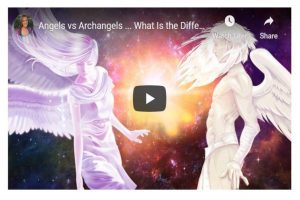What was Steiner’s Anthroposophical Adaption of the Dionysian Hierarchy of Angels?
Scientist, occultist, and philosopher Rudolph Steiner was the founder of the theosophical group, the Anthroposophical Society. Steiner took the traditional hierarchy of choirs originally devised by the theologian Dionysius the Areopagite and adapted it to his theosophical principles. We will find here that Steiner’s angels are not quite defined in the classical tradition. Traditionally, the angels are arranged into nine choirs, which are grouped in three angel hierarchies. Steiner redesignated them as follows:
Traditional First Angel Hierarchy versus the Anthroposophical Adaption
First Angelic Hierarchy
Seraphim Order of Angels – Anthroposophical Adaption – Spirits of Love
Cherubim Order of Angels- Anthroposophical Adaption – Spirits of harmonies
Thrones Order of Angels- Anthroposophical Adaption – Spirits of will
Second Angelic Hierarchy
Dominations Order of Angels- Anthroposophical Adaption – Spirits of wisdom
Virtues Order of Angels- Anthroposophical Adaption – Spirits of movement
Powers Order of Angels- Anthroposophical Adaption – Spirits of form
Third Angelic Hierarchy
Principalities Order of Angels- Anthroposophical Adaption – Spirits of personality or time
Archangels Order of Angels- Anthroposophical Adaption – Fire spirits
Angels Order – Anthroposophical Adaption – Sons of life or of twilight
Steiner’s First Angelic Hierarchy Adaption
In this first Angel Hierarchy, the angelic beings at this level extend their very substance into the universe by transforming spiritual light into the hard substance of this reality. Steiner’s scheme here can often be difficult for humans to comprehend.
Steiner’s Second Angelic Hierarchy Adaption
The second hierarchy forms the substance provided by the first hierarchy into the recognizable patterns of the world. These tasks correspond well with the theosophical tradition, which pictures the devas as being primarily concerned with the creation of forms.
Steiner’s Third Angelic Hierarchy Adaption
In the third hierarchy, we find the awakening of humanity. The intelligence and development of humanity is present. A guardian angel is depicted as the individual angel intelligence assigned to each person. Steiner’s angels are primarily concerned with the individual’s soul growth, which is different from the traditional role as protector. They attempt to guide humans through their thoughts, moods, intuitions, and inspirations. Steiner taught that humans could help their guardian angels by becoming more aware of them and their guidance.
More of Steiner’s Ideas Concerning Angels
Steiner taught an interesting concept surrounding the notion of angels who guide communities. Large institutions such as marriages to professional associations have an angel assigned to working with uniting the consciousness of its members. Certain archangels are assigned to guiding a nation, a people, or a language, which in turn blends into the work of the principalities.
The principalities guide the development of humanity as a whole. Steiner also taught about angelic adversaries. These adversaries had stepped out of spiritual alignment to take on roles as adversaries. This is so developing humanity would have obstacles to overcome. These fallen angels are either Ahrimanic (too dark) or Luciferic (too light).
Also, interestingly, according to Steiner, Archangel Michael took over from Gabriel in 1879. Michael will serve as the driving force for human development until the end of the second century of the next millennium. According to Steiner, Michael’s task during this cycle is to free humanity from the excessive materialistic culture that has been developing for centuries. Steiner viewed his own mission as contributing to Michael’s work.




